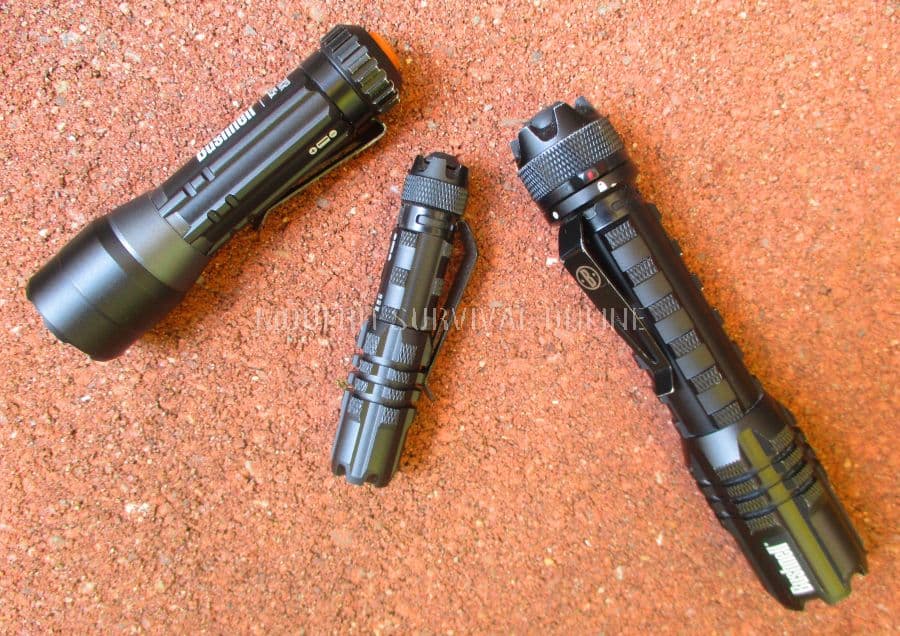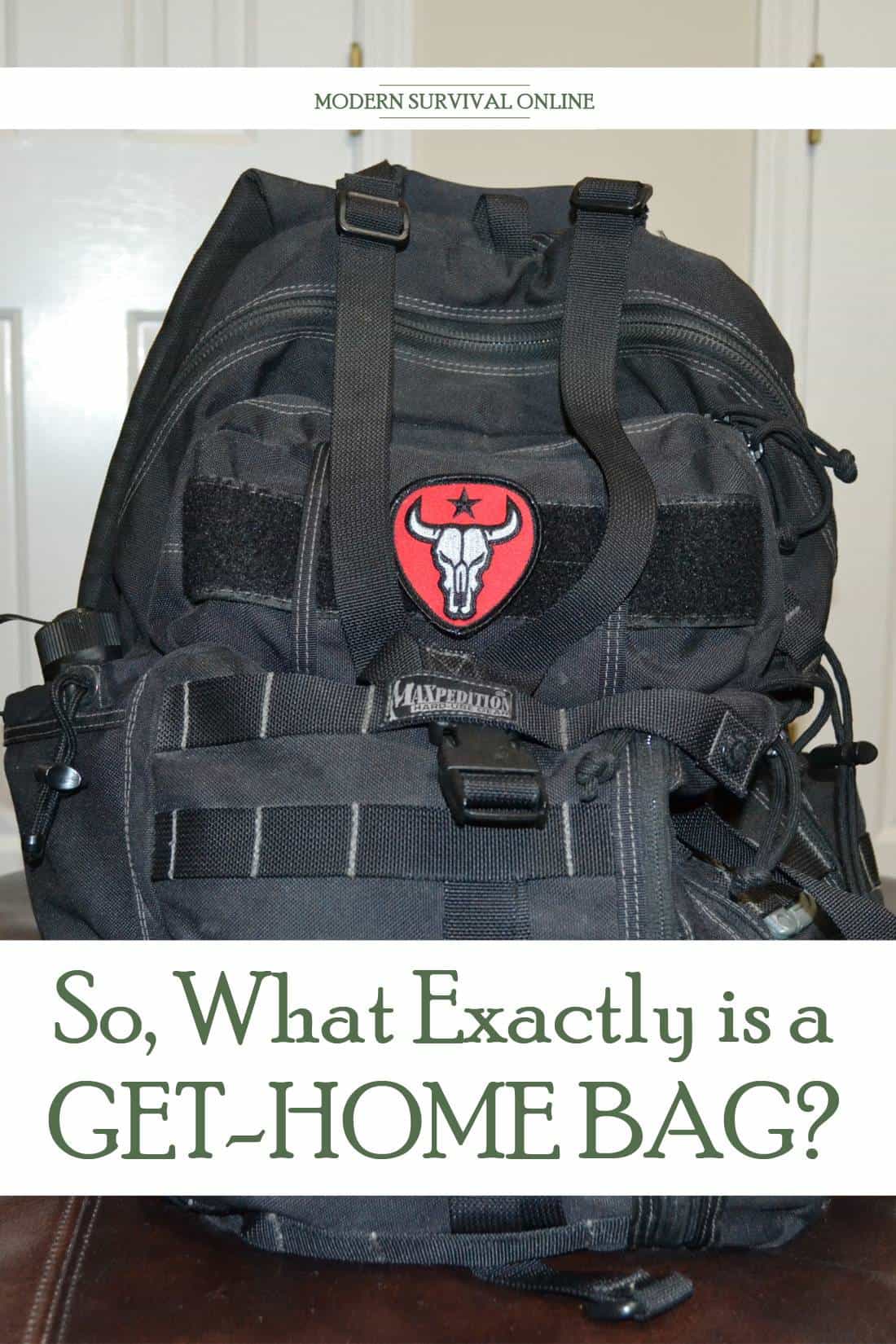By now pretty much every prepper is familiar with the concept of the bug-out bag, a central piece of kit that will allow you to sustain while evacuating from your home to safer ground. But what will someone rely on if they are trying to get back to their home during times of trouble?
Most folks’ lives are busy enough that chances are pretty good they will be away from home at the beginning of any major event. This is precisely why preppers should employ a get-home bag, or GHB.

What’s a get-home bag exactly? A get-home bag is a small or medium format pack that is designed to carry only what equipment and provisions you would need to make your way back home during a disaster or other major crisis. These bags often contain typical survival supplies but the emphasis is on remaining lightweight and keeping the bearer moving quickly.
Get-home bags have a lot in common with bug-out bags and other prepping-centric luggage, but there are some considerations specific to the scenario in which they would be used that bears some explanation.
In the rest of this article we will unpack these considerations and provide you with tips for properly setting up your own get home bag.
Get Home to Get Ready
It is hard to imagine a situation that could be properly called a crisis event where you would not want to be at home if you are a prepper.
After all, home is where the heart is, but also where your heavily-laden stash of gear, tools, food, water, and all the other stuff is, stuff you have spent a tremendous amount of time and energy putting into place. It is also the place where your family is most likely to head or already be when trouble breaks open.
In short, in virtually every situation you will have a major “home field advantage” at your home compared to somewhere else, be at your workplace, out in town or elsewhere.
How unfortunate it is then that the typical lives of adults and many children are typically full of various activities and responsibilities that take us away from home many hours out of every day, and many days a week.
School, work, errands, activities and more all served to keep us in an “orbit” that is anything but homebound.
Depending on how far from home you work, or how far school or any other activity is from home, you might have many miles to cover when the pressure is on.
In many cases, you could be forced to cover those miles on foot. That means you will need a certain amount of equipment and supplies if you want to increase your chances of success. That’s why you need a get-home bag.
Typical Get-Home Bag Contents
A get-home bag carries supplies and gear that you would probably be expecting to see in any other piece of prepper luggage, such as a BOB. However, where the GHB differs from the BOB is in its emphasis on a radical weight reduction and speed.
Why? Because a get-home bag is designed only to expedite your movement home as quickly as possible, all other considerations be damned. It is not a long-term sustainment pack; it is more of a bare-minimum sustainment pack!
For that reason look at the packing list for a get-home bag and you’ll probably notice an emphasis on ready to use supplies, tools and defensive gear. Compare and contrast with a BOB which is likely to emphasize supply replenishment, sustainment and shelter.
You might be forced to spend more than a single day hoofing it home, but any gear in your GHB for the purpose is going to be quite lean.
Some typical items included in GHB’s are:
Food
Any food included in your get home bag should be oriented to keeping your body fueled up with quick, sustainable energy.
Lightweight, long lasting, ready to eat items like beef jerky, trail mix, meal replacement bars and similar are ideal. If you are a long-distance commuter, you might consider a broken down MRE for a major calorie load during a stop.
Water
Water is one of those “love it, hate it, have to have it” items for a get-home bag. On the one hand, you can’t live long without water, and even if you just dehydrate badly enough in the course of a day you might be in rough enough shape that you can’t continue. On the other hand, it is extremely heavy, slowing you down.
Generally, if you are a short distance commuter you can probably get away with a single day’s worth of water or less. A longer distance commuter should pack less potable water but include an emergency water filter to refill en route.

Flashlight / Headlamp
As bad as things are starting out they are going to get a lot worse once night falls and you have little or no light to navigate by.
Flashlights and headlamps are always useful in any kind of emergency, so make sure you include them in your get-home bag along with a few spare sets of batteries.
Knife / Hatchet
A sturdy fixed blade knife is always a good tool to have, no matter the situation. You’ll use this for countless chores when called upon, but if you never have to use it, that’s okay as it is cheap, light insurance.
Depending on where you live and where your probable routes will take you a hatchet might be a worthwhile inclusion as it has better efficacy for minor demolition tasks and also makes for a formidable weapon.

Gloves
Hazards out in the world will make short work of your hands if you aren’t careful, and you’ll be forced to interact with many of them during an SHTF event. A sturdy set of gloves will keep you from puncturing the skin on your hands.
First-Aid Kit
A first aid kit is a mandatory inclusion for a get-home bag. It should be able to take care of minor and incidental injuries like cuts, scrapes, sprains and burns as well as more serious trauma like major lacerations, penetrating injuries and so on.
It won’t do you any good if you don’t have the training, so make sure you learn what to do and keep your skills sharp.
Maps and Compass
GPS systems are excellent these days but depending on what sort of situation you are dealing with they might not be reliable. Knowing how to use a map and compass will reliably get you where you need to go with no dependence on electricity.
Cash
Is always a good idea to have cash on hand during an emerging disaster scenario. Chances are credit/debit cards won’t work or else they won’t be accepted. Cash speaks, and if you carry enough it might get you a favor when you desperately need one.
Sturdy Footwear
If you don’t habitually wear good boots or shoes for walking miles in, make sure you have a set with your GHB at all times.
Get-Home Bag Selection
Compared to a bug-out bag, a get-home bag is lighter and leaner in all ways, and this includes the pack itself. Generally, a get-home bag will be a backpack format, but it will usually lack a waist belt or frame.
Considering you’ll be carrying a comparatively light load these won’t make much of a difference. Aside from this consideration you should choose your GHB according to all the other usual metrics you would use to select a bug-out bag.
It must be durable and reliable, able to carry its load under harsh conditions, and despite mistreatment and rough handling.
The style and color of the bag should also be chosen according to your “tactical” situation, meaning it should not stick out among the masses of people in your area. If your plan calls for discretion, make sure the backpack is camouflaged accordingly.
Conclusion
A get-home bag is in essence a smaller, lighter and leaner bug-out bag that is designed to sustain the user just long enough to get them home at the onset of a disaster scenario rather than get them out of town to a bug-out location.
When the time comes to ditch your vehicle or dash out of the office the get-home bag is what you will grab in order to equip yourself with the bare minimum needed to complete your journey in a timely fashion.

via Modern Survival Online https://ift.tt/356M0MW
No comments:
Post a Comment